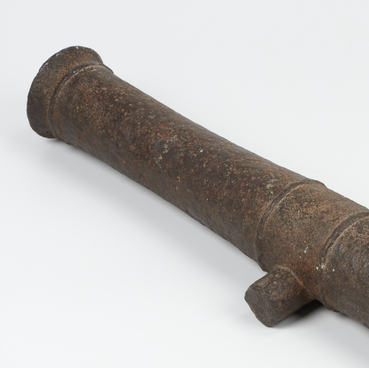The Russian smoothbore flintlock rifle got its name from the French word fusil, which means ‘musket.’ In Russia, flintlock rifles were introduced in 1715 by the decree of Peter the Great as the official weapon of the Russian army. Rifles with bayonets were used in hand-to-hand combat. Therefore, the infantry was staffed exclusively with units with this new type of weapon.
All types of flintlock rifles had the same device — an improved flintlock mechanism. In such locks, a spark was made by the impact of the frizzen on the flint. One of the distinctive features of this weapon was the flint, which was connected to the lid of the compartment (pan), where the finer powder was poured. The flintlock was so convenient that the gun was in service for about 150 years. This weapon had two more advantages — a tube that fits onto the barrel, allowing one to shoot with a bayonet, and it was relatively light. Flintlock rifles differed in caliber, barrel length, and weight.
To charge, the soldier would put the safety on and open the pan of the lock. Then he would take a cartridge out of the cartridge bag, bit off the tip of the paper shell with his teeth, pour a small amount of gunpowder out of it on the pad, and close the lid with the flint. After that, he would put the flintlock rifle on the ground, pour all the remaining powder into the barrel, and put the paper wrapped bullet in there. Then, with a special rod — a ramrod — he would ram down the charge into the barrel several times over. After inserting the ramrod back into the stock, the soldier would raise the fusil and, if he was going to open fire, put the trigger on the full cock. An experienced soldier could fire up to six times a minute, whereas the older rifles could only be fired once.
The range for an effective salvo firing of flintlock rifles was about 300 meters, for a single aimed shooting — up to 100 meters. During the salvo fire, the entire company fired simultaneously. This method made it possible to hit targets more effectively and count spent cartridges. It was also possible to visually determine the place where more bullets fell. Sometimes a salvo was used to adjust the rifles.
The lifespan of this type of weapon could reach up to 120 years. But in addition to the advantages that influenced the widespread use of the flintlock rifle, it also had disadvantages. The most significant of them — misfires when shooting: for every three shots, there was one misfire.
The flintlock rifle displayed at the exhibition became part of the collection of the Ishim Museum Complex in 1993. It was donated by Alexander Gutorov.
All types of flintlock rifles had the same device — an improved flintlock mechanism. In such locks, a spark was made by the impact of the frizzen on the flint. One of the distinctive features of this weapon was the flint, which was connected to the lid of the compartment (pan), where the finer powder was poured. The flintlock was so convenient that the gun was in service for about 150 years. This weapon had two more advantages — a tube that fits onto the barrel, allowing one to shoot with a bayonet, and it was relatively light. Flintlock rifles differed in caliber, barrel length, and weight.
To charge, the soldier would put the safety on and open the pan of the lock. Then he would take a cartridge out of the cartridge bag, bit off the tip of the paper shell with his teeth, pour a small amount of gunpowder out of it on the pad, and close the lid with the flint. After that, he would put the flintlock rifle on the ground, pour all the remaining powder into the barrel, and put the paper wrapped bullet in there. Then, with a special rod — a ramrod — he would ram down the charge into the barrel several times over. After inserting the ramrod back into the stock, the soldier would raise the fusil and, if he was going to open fire, put the trigger on the full cock. An experienced soldier could fire up to six times a minute, whereas the older rifles could only be fired once.
The range for an effective salvo firing of flintlock rifles was about 300 meters, for a single aimed shooting — up to 100 meters. During the salvo fire, the entire company fired simultaneously. This method made it possible to hit targets more effectively and count spent cartridges. It was also possible to visually determine the place where more bullets fell. Sometimes a salvo was used to adjust the rifles.
The lifespan of this type of weapon could reach up to 120 years. But in addition to the advantages that influenced the widespread use of the flintlock rifle, it also had disadvantages. The most significant of them — misfires when shooting: for every three shots, there was one misfire.
The flintlock rifle displayed at the exhibition became part of the collection of the Ishim Museum Complex in 1993. It was donated by Alexander Gutorov.



